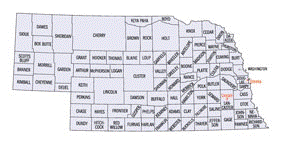Geography Program

Geography Program: Faculty Publications
Document Type
Article
Date of this Version
2011
Abstract
Areal interpolation is the procedure of using known attribute values at a set of (source) areal units to predict unknown attribute values at another set of (target) units. Geostatistical areal interpolation employs spatial prediction algorithms, i.e., variants of Kriging, which explicitly incorporate spatial autocorrelation and scale differences between source and target units in the interpolation endeavor. When all the available source measurements are used for interpolation, i.e., when a global search neighborhood is adopted, geostatistical areal interpolation is extremely computationally intensive. Interpolation in this case requires huge memory space and massive computing power, even with the dramatic improvement introduced by the spectral algorithms developed by Kyriakidis et al. and Liu et al. based on the Fast Fourier Transform (FFT). In this study, a parallel FFT-based geostatistical areal interpolation algorithm was developed to tackle the computational challenge of such problems. The algorithm includes three parallel processes: (1) the computation of source-to-source, and source-to-target covariance matrices by means of FFT; (2) the QR factorization of the source-to-source covariance matrix; and (3) the computation of source-to-target weights via Kriging, and the subsequent computation of predicted attribute values for the target supports. Experiments with real-world datasets (i.e., predicting population densities of watersheds from population densities of counties in the Eastern Time zone, and in the continental U.S.) showed that the parallel algorithm drastically reduced the computing time to a practical length that is feasible for actual spatial analysis applications, and achieved fairly high speed-ups and efficiencies. Experiments also showed the algorithm scaled reasonably well as the number of processors increased, and as the problem size increased.
A zipped file of supplementary material is attached (below).


Comments
Published in International Journal of Geographical Information Science 25:8 (2011; Special Issue on Data-Intensive Geospatial Computing), pp. 1241–1267; doi: 10.1080/13658816.2011.563744 Copyright © 2011 Taylor & Francis. Used by permission.